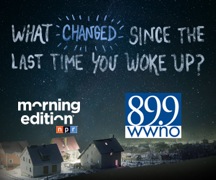Wrong photo, wrong man, wrong technology
6th July 2020 · 0 Comments
Cops using facial recognition technology wrongfully arrested a Black man. Robert Julian-Borchak Williams was in his office at an automotive supply company when he got a call from the Detroit Police Department telling him to come to the station to be arrested, according to a New York Times article: “Wrongfully Accused by an Algorithm,” which commented that the arrest may be the first made on the basis of facial recognition data.
Police wouldn’t say why he was being arrested, only showing him a piece of paper with his photo and the words “felony warrant” and “larceny.”
The cops thought Williams was the person who stole $3,800 worth of watches from an upscale boutique in an exclusive Detroit neighborhood. When they were in the interrogation room, they showed Williams three photos. The first was a blurry image from a surveillance video but it wasn’t a photo of Williams. Long story short, none of the photos looked like Williams.
Williams’ question nailed the problem, not only with the flawed technology known as facial-recognition but also a problem that the African-American community has long recognized as symptomatic of the structural racism Black people confront often when they are considered suspects: “You think all Black men look alike?” he asked.
How many times have Black men been wrongly arrested and or killed because white police viewed them as suspects? Now with the arrest of Williams based on grainy photos and this so-called facial recognition technology, there is reason for concern.
Williams was released after being falsely accused, wrongfully arrested and embarrassed. He was handcuffed in front of his neighbors. To add insult to injury, his wife had to miss a day of work – to say nothing of the anxiety the family experienced. An apology by the city of Detroit fell far short of a reparative solution to the hasty arrest.
The ACLU is suing on behalf of Williams.
Since his arrest, several companies that sold the software to law enforcement agencies obviously decided to ban police use of their facial recognition tools. Microsoft, IBM and Amazon have decided not to sell the software to police departments.
It had to come down to a wrongful arrest before they accepted the fact that the algorithms that drive the photo collection software were flawed and biased. But this is what companies do. They weigh the risk factors, and even when they know some people might get injured from their products, they will often choose profit margins over people.
Not this time. Especially not when structural racism has been outed and there are studies that prove facial recognition software can produce false positives and that “gender and racial bias” may be baked.
In 2018, researchers found that many commercial facial recognition systems (including IBM’s) were biased.
A December 2019 National Institute of Standards and Technology study found that “Across demographics, false positive rates often vary by factors of 10 to beyond 100 times” and “false positive rates are highest in West and East African and East Asian people, and lowest in Eastern European individuals.”
Also, several companies have been sued for using the technology in a way that violates people’s privacy rights. In 2018, the American Civil Liberties Union found that Amazon’s Rekognition software incorrectly matched 28 members of Congress to faces picked from 25,000 public mugshots, for example.
Another company, Clearview AI, was found to have built its facial recognition tool with more than three billion images from social media sites, and its technology was being widely used by private sector companies and law enforcement agencies. Clearview is at the center of a number of privacy lawsuits. Additionally, Facebook was ordered in January to pay $550 million to settle a class-action lawsuit over its unlawful use of facial recognition technology.
This is what happens when people of color are viewed as less valuable than others, when non-Blacks think all Black people look alike, and when ignorance prevails relative to photos of Black people.
Most experienced photographers know that, in order to capture dark-skinned people’s facial features, specific lighting and photographic techniques are necessary. Backgrounds, light and dark environments and colors in the environment must be considered when photographing dark-skinned people. Even more photographic techniques are needed when a group photo of people of different hues is taken.
For the record, Black people don’t all look alike, we have a spectrum of skin tones that span humanity’s rainbow, so facial recognition software is a non-starter when it comes to identifying people of color.
The moral of this story is, look at the humanity in each individual and look closely at their facial features before you leap to the wrong conclusion.
This article originally published in the July 6, 2020 print edition of The Louisiana Weekly newspaper.



